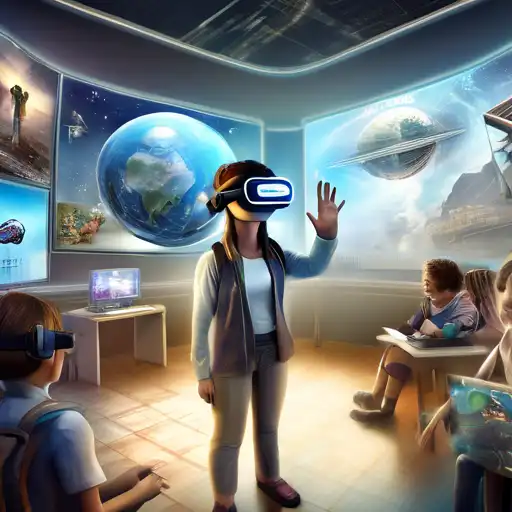Introduction to Virtual Reality in Education
Virtual Reality (VR) is rapidly transforming the educational landscape, offering immersive learning experiences that were once unimaginable. This technology enables students to explore historical sites, dissect virtual frogs, or even travel through space, all from the safety of their classroom. The potential of VR in education is limitless, providing a dynamic and interactive way to engage students.
The Benefits of VR in Learning
VR technology offers numerous advantages in educational settings. It caters to various learning styles, making complex concepts easier to understand through visualization and interaction. Here are some key benefits:
- Enhanced Engagement: VR captures students' attention like never before, making learning more enjoyable and effective.
- Improved Retention: Immersive experiences help in better retention of information by engaging multiple senses.
- Accessible Learning: Students from anywhere in the world can access the same high-quality educational experiences, breaking down geographical barriers.
- Safe Environment: VR provides a safe space for students to experiment and learn from mistakes without real-world consequences.
Implementing VR in the Classroom
Integrating VR into education requires careful planning and consideration. Schools and educators need to assess the technological requirements, such as VR headsets and compatible software. Additionally, training for teachers is essential to effectively incorporate VR into their lesson plans. Despite these challenges, the investment in VR technology promises a significant return in terms of student engagement and learning outcomes.
Challenges and Considerations
While VR offers exciting opportunities, there are hurdles to overcome. The cost of VR equipment and the need for high-speed internet can be prohibitive for some institutions. Moreover, ensuring that VR content is pedagogically sound and aligns with curriculum standards is crucial for its success in education.
The Future of VR in Education
The future of VR in education is bright, with ongoing advancements making it more accessible and effective. As technology evolves, we can expect more personalized and adaptive learning experiences, further enhancing the educational journey for students worldwide. The integration of VR with other emerging technologies, such as artificial intelligence, will open new frontiers in education.
For more insights on innovative learning technologies, check out our article on EdTech Trends Shaping the Future of Education.
Conclusion
Virtual Reality is set to redefine the educational experience, making learning more interactive, engaging, and effective. By overcoming current challenges and leveraging the full potential of VR, educators can provide students with unparalleled learning opportunities. The journey of integrating VR into education is just beginning, and its impact will be profound and far-reaching.
